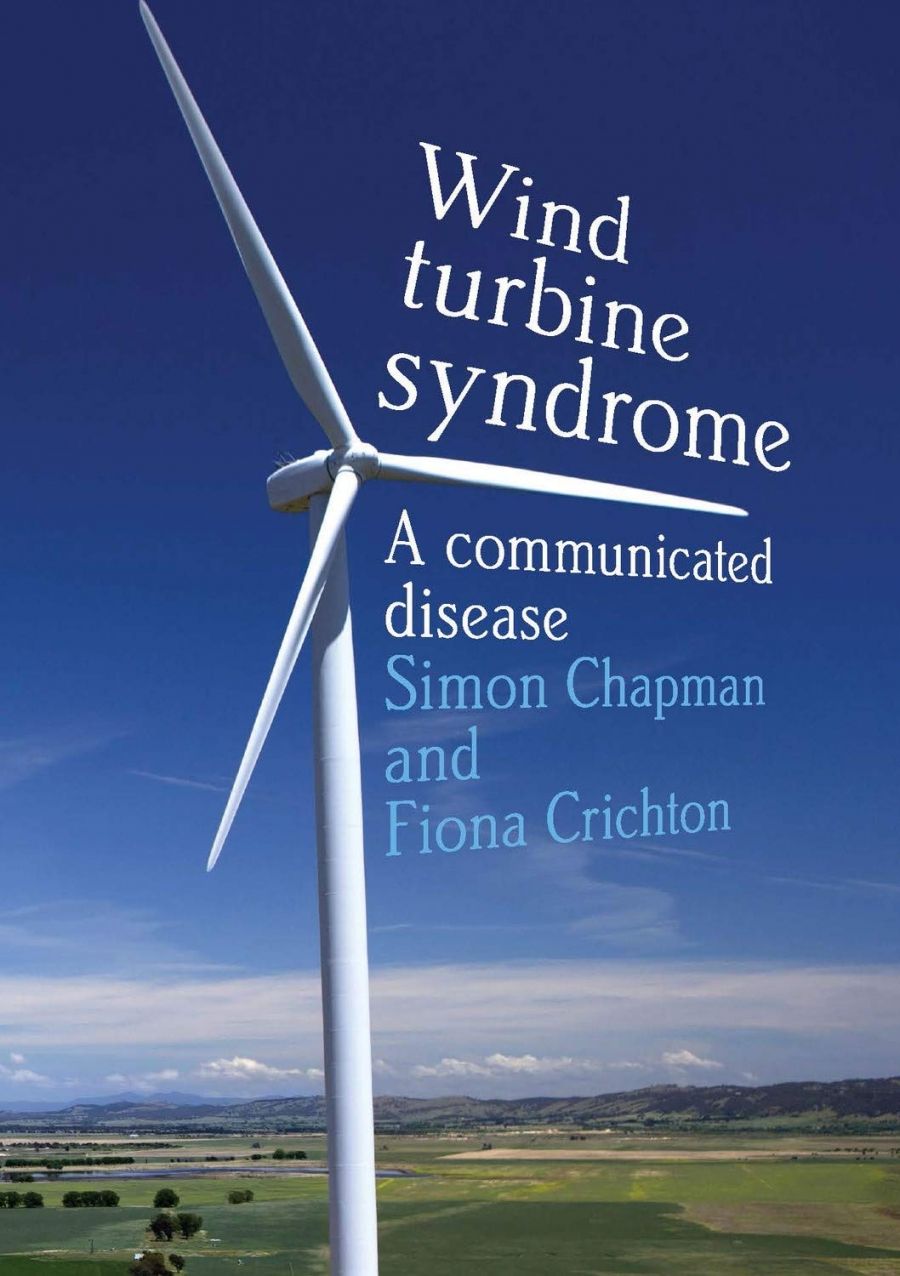
- Free Article: No
- Contents Category: Environmental Studies
- Review Article: Yes
- Book 1 Title: Wind Turbine Syndrome
- Book 1 Subtitle: A communicated disease
- Book 1 Biblio: Sydney University Press, $40 pb, 361 pp, 9781743324967
One response to this complexity has been to condense the field of vision, from profits, aesthetics, and threats to wildlife to human health risks. This was the sting in Rachel Carson’s prophetic Silent Spring, published in 1962: birds might be dying, but it was the thought of children struck down by pesticide-generated disease which troubled readers. Now, with average global temperatures rising, glaciers melting, and ‘natural’ disasters ever more frequent and potent, it is atmospheric carbon which stands centre stage. ‘Protecting the health of future generations,’ writes Samuel Myers, a leader in the new discipline of planetary health, in the Lancet, ‘requires taking better care of Earth’s natural systems.’
Health is proving potent in addressing climate change – but it may also be used for other purposes. ‘You will have heard of the health fears and objections raised by residents,’ wrote businessman and local landholder Maurice Newman in a submission to the Crookwell hearing. ‘Many of these fears are based on empirical research’, he continued, ‘and, not least, the anecdotal evidence’ of those living near windfarms. ‘Often these effects are kept within families for fear of reprisals.’
 Cullerin Range Wind Farm near Crookwell (photograph by Bidgee/Wikimedia Commons)
Cullerin Range Wind Farm near Crookwell (photograph by Bidgee/Wikimedia Commons)
Wind Turbine Syndrome: A communicated disease, by Simon Chapman and Fiona Crichton, is a response to these claims. Chapman is an emeritus professor of public health at the University of Sydney whose expertise has been solicited by leading scientific bodies; Crichton has a PhD in psychological medicine from the University of Auckland. They gather evidence on the syndrome from all available experimental and clinical studies and scientific reviews and conclude that the best explanation is that the many symptoms (they count 247) reported by those living near turbines are ‘communicated’; that they are elicited not, directly, by noise or infrasound, but by protest groups, online communities, opinion leaders, and media reports.
It is a meticulous book. The first chapters establish that wind energy was harnessed for centuries, and modern turbines for decades, before health complaints were first registered. The third and fourth chapters interrogate the complaints of wind opponents, before the fifth, the crux of the book, presents experimental research and the careful conclusion of the authors that wind turbine syndrome is a psychogenic condition, apparently arising from psychological processes like the nocebo effect (the negative corollary of the placebo: those expecting to become ill are likely to become ill). Subsequent chapters concentrate on wind opponents and their tactics, before a final chapter suggesting ways forward. The breadth of the literature reviews and the presentation of Crichton’s own doctoral research are compelling – indeed, the arguments of the book are presented with such force and in such detail that it is difficult for a dispassionate reader to disagree with them.
There appear to be few dispassionate participants in the public arena, however. In January 2013, then Prime Minister Tony Abbott instructed the National Health and Medical Research Council to investigate the newly-reported ‘wind turbine syndrome’. After a twelve-month inquiry the NHMRC reported that there was ‘no consistent evidence’ that windfarms adversely affected human health, and called, guardedly, for further research. In June 2013, veteran broadcaster Alan Jones hosted an anti-wind rally outside Parliament House; Angus Taylor (now Energy Minister) addressed the small crowd. In 2014, Abbott adviser and Crookwell landholder Maurice Newman denounced the ‘scientific delusion’ and ‘climate change madness’ embodied by the IPCC, and the United Nations’ broader ‘environmental catastrophism’ as a ploy to secure a new internationalist world order. Treasurer Joe Hockey spoke evenly of the ‘utterly offensive’ and ‘appalling’ turbines. In 2015, Abbott spoke of the ‘potential health impacts’ of that ‘blight on the landscape’, the windfarm. Both ministers were speaking with Alan Jones. Four years later, shortly after the Crookwell hearing, and after losing his seat in a campaign focused on climate change, again being interviewed by Jones, Abbott lauded Taylor’s commitment to coal and said: ‘The last thing we want is what I regard as the dark satanic mills of the modern era spoiling our landscape.’
If wind turbine syndrome is, as the authors argue, a communicated disease, the news may help dispel its symptoms. The authors describe experimental evidence that providing positive information about health risks can reduce the incidence of symptoms, even after the intake of negative information. But it may be, as wind opponent Calvin Luther Martin once declared in a bullish book proposal, that ‘real evidence doesn’t work’. He meant the anecdotal evidence of sufferers, but the same might be said of a book like this, which, with its exhaustive detail and sometimes caustic tone, may find little purchase among wind warriors.
Chapman and Crichton’s research shows that, while direct health effects might be unproven, a significant number of those who live near wind turbines may be annoyed by them – especially those who derive no benefit. They are disturbed by the sound and size of wind turbines and by the way their blades cut the light – but perhaps also by the way they are planted in communities which may already feel colonised, as Wendell Berry writes, by cities and global corporations. There are real costs of renewable energies, even if they are outweighed by the mounting costs of fossil fuel industries. The transition to renewable energy and ecological sustainability will require credible scientific evidence, political leadership, ethical communication, and the equitable distribution of costs and benefits.


Comments powered by CComment